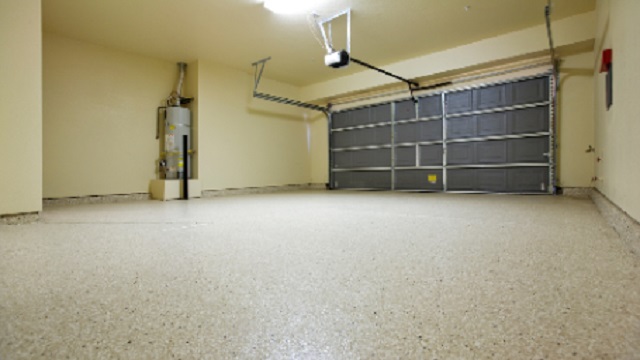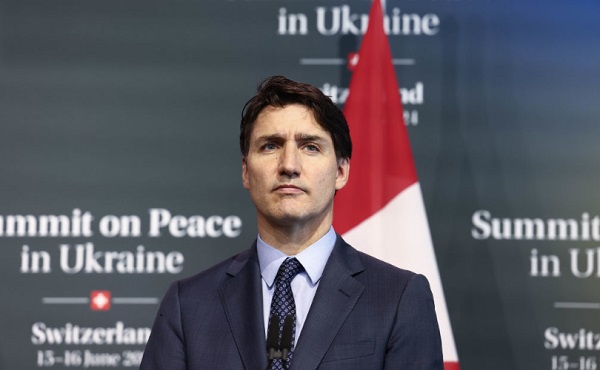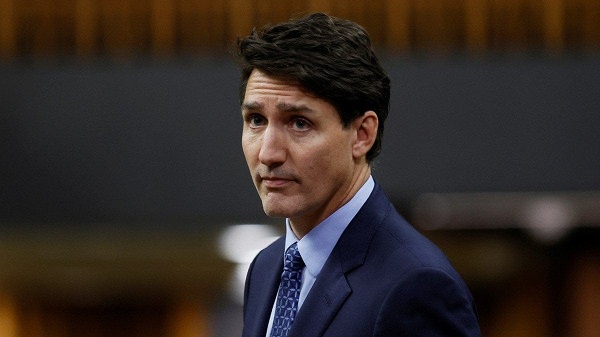Also Interesting
How to Improve Garage Door Insulation for Energy Efficiency

During all seasons, many people suffer from extreme temperatures in their garages – either too hot or too cold – and the place becomes uncomfortable as well as inefficient. Whether you are hit by the scorching summer heat or frozen by winter, stabilizing a favorable temperature in your garage can be a great challenge. Insulating the garage is one of the best ways to improve its energy efficiency.
This handbook will take you through simple steps of enhancing your garage door’s insulation in order to make it energy efficient. Moreover, additional tips will be given to ensure that the garage remains a useful and cozy part of your house all year round.
Types Of Garage Door Insulation
To start saving energy, choose the best garage door insulation. Various types of insulation keep warmth in without using too much electricity for different reasons. The following are some examples: Reflective foil insulation reflects heat away; foam board insulation has great thermal resistance; and batt insulation is easy to install and prevents heat loss effectively.
As explained by the experts at garage door repair Toronto, If you’re unsure about which one is right for you or how it should be done, consult with a professional service that will guide you through selecting and setting up suitable materials based on your requirements so as to make sure all year around comfort while being energy efficient at home.
Tips on How to Improve Garage Door Insulation
If you are looking forward to having a warmer winter this year as well as enjoying cooler summers, achieving the correct garage door insulation could totally transform your experience. Ensure that there is no inlet or outlet for air by blocking all possible spaces through which it could pass and beef up its interior with some rigid encasement too for good measure.
Fill in Gaps
This method aims at improving energy efficiency through filling up crevices on the gate which may be allowing leakage of air. When implemented, one can expect reduced electricity expenses due to minimal heating or cooling requirements and a more habitable environment.
● Check if there are any openings around where light from outside can be seen during daytime or if you feel a draft, that’s a clear indication of air seepage.
● The use of weather strips along edges acts as a barrier against unwanted maintaining normal flow within.
● Apply small beads of caulk to seal off tiny cracks found along frames.
● Fit new bottom seals where old ones are worn out since they are essential components in the fight against door drafts.
● For larger gaps, use expandable foam insulation which is effective at sealing them off and preventing airflow.
● Ensure that all fasteners and brackets are tight; sometimes gaps may appear simply due to things coming loose over time.
● Lastly, don’t forget about corners—they tend to be overlooked but can let out quite a bit if they’re not properly sealed.
Insulate the door
After plugging up any openings, another good step towards energy efficiency would be directly insulating your garage door. Selecting the proper material type is key during this phase so that you can achieve desired results without compromising structural integrity or aesthetics.
● The insulation should be secured to the door using fasteners or adhesive tape made for this purpose. It must remain flat and not push out the panels.
● Use weather-stripping or aluminum tape on the edges for a tight fit that will prevent any air leaks.
● Shut your garage door and look for any places you missed or spots that seem like they could let in drafts. You may need to add more sealing material.
If you add insulation directly to your garage door, it will make your house more comfortable and lower energy costs over time.
Insulation for Garage Walls and Ceiling
Insulating the walls and ceiling of your garage can have a huge impact on how much energy is used. It helps to keep the space warm during winter and cool in summer which saves money for heating and cooling.
● Find suitable insulation materials – fiberglass batts, foam board, or spray foam are good options depending on where you live and what you can afford.
● Accurately measure the area so that you do not buy too much or too little insulation.
● Cut insulation so it fits tightly between wall studs and ceiling joists because this stops hot/cold air from escaping through gaps.
● Attach each piece using the correct fasteners for your chosen type of insulating material. For example, adhesive works great with foam boards while staples work well with fiberglass batts.
● Put drywall or another type of wall paneling over insulation for a cleaner look and more fire resistance.
● Boost thermal performance by sealing all seams and edges with caulk or foam sealant to block drafts and moisture.
● If you live in an extremely hot climate, consider installing a radiant barrier.
Reflective foil placed over insulation can greatly reduce heat transfer from the sun-baked roof.
● Do not neglect the garage door itself – combining wall and ceiling insulation with an insulated garage door will maximize energy savings.
● Finally, check with local building codes for compliance, especially concerning ventilation to prevent moisture buildup.
Other Ways You Can Save Energy In Your Garage
If you want to take your garage’s energy efficiency up another notch, there are even more tricks you can try. Upgrade to an insulated door or add weather stripping for starters. You can also explore additional measures that will cut down on energy costs and keep your garage cozy no matter the season.
Install Insulated Garage Doors
Opting for insulated garage doors is a great way to save energy. Designed to keep heat in during the winter and out during the summer, these doors help maintain a consistent temperature inside the garage which can lead to lower electricity bills.
If you want to insulate your garage door, consider installing insulated doors. This can also reduce noise from outside, which is great for people who use their garage as a workshop or living space.
Enhancing the insulation properties of the door can be done by using weather stripping around it. What this does is seal off any gaps where air may seep in or out. Additionally, selecting an energy-efficient model of garage door opener contributes to overall system efficiency.
Use weather stripping
After installing insulated garage doors, another thing you might want to do is install weather stripping too. This will help keep any unwanted hot or cold air from slipping into your garage while keeping comfortable temperatures inside. It seals around where the bottom of the door meets the floor and its frame. Working undercover – inexpensive yet effective, weather stripping also fights against drafts; thus reducing one’s energy bill. Tools required for installation are minimal and therefore can be done by anyone with a little spare time.
Consider a garage door opener with energy saving features
If you’re going through the trouble of adding a weather seal, another energy-efficient trick would involve choosing openers with these features. This might include ones that have a “standby mode” setting which uses minimal power when not in use, or automatically switches off lights on the unit after some time of no activity.
This means lower energy bills and a happier planet. Some even have battery backups to keep things running during power outages, adding convenience without sacrificing eco-friendliness.
Opting for these advanced openers can make a noticeable difference in managing your home’s energy consumption. They work quietly and efficiently, reducing noise while also cutting down on unnecessary power use.
To conclude
Improving your garage door’s insulation is a smart move. It keeps your space comfy, slashes those energy bills, and even quiets down noise from outside. Start with some basic fixes like sealing gaps and adding proper insulation to the door itself.
Don’t forget the walls and ceiling. And if you’re feeling fancy, upgrading your entire door or picking a smarter opener can make a huge difference. Energy efficiency in the garage is totally achievable with these simple steps.
Also Interesting
60% of Canadians gamble each month – why the industry is going from strength to strength

When it comes to regulating gambling, Canada has a somewhat relaxed approach. The Canadian Gaming Association oversees the industry, but it’s up to individual provinces to enact and enforce any laws relating to online casino gaming, sports betting, traditional casino gaming, and other forms of gambling.
Canada’s online casino gaming laws are not totally clear, but individual provinces are starting to put this right. Ontario was the first and did so when it launched its own regulated igaming market in April 2022. Now some other provinces have followed suit, creating a safer igaming environment for players in those provinces. Below is a look at gambling in Canada compared to other parts of the world, at gaming laws in Alberta compared to other provinces, and at the future of the Canadian, US, and UK gambling industries.
Canada: a forever love of gambling
Gambling in some form or other has always been popular in Canada. Way back in the 1990s, research found six in ten Canadians (60%) gambled every month. Additionally, four in ten (43%) spent between 1 and 20 Canadian dollars on gambling. Fast forward to today and the Canadian gambling market is worth 14.2 billion US dollars as of January 2024, according to data on the website of consumer and market data company Statista.
It seems Canada enjoys wagering just as much as two other countries that love a gamble: the US and the UK. Data on the Statista website shows that 49% of US adults took part in gambling activities in 2023. Fifty-six percent said their attitude towards gambling had relaxed, compared to the 50% of 2019.
The UK returned similar stats for the same year. Forty-eight percent of adults reported engaging in gambling activity. Online casinos generated the most gross gambling yield in 2023, but it was the nation’s National Lottery that people played the most.

Alberta: following Ontario’s lead
The regulatory developments in Ontario have triggered movement in Alberta. In May 2024, Bill 16, the Red Tape Reduction Amendment Act, made it through the process and later received Royal Assent to become law. The act removes the monopoly of gaming by a single government entity and will allow private operators, licensed by Alberta’s provincial regulator, to provide online gaming services in Alberta, meaning players will have a choice of more than one Alberta online casino to play at.
The regulation transforms Alberta into one of the more liberal provinces when it comes to online gambling, others being Quebec, Ontario, and British Columbia.
Several provinces, such as Novia Scotia and Northwest Territories, have no provincially regulated online gaming sites. Some also restrict betting on horse racing and/or other types of sports betting, obliging citizens to use international betting sites for freedom from caps and betting on as many events as they wish.

What lies ahead for the Canadian, US, and UK gambling industries?
Canada’s appetite for gambling is clear, and the industry’s online sector is beginning to thrive. Ontario has enjoyed vast success by creating its own regulated market, one which, in just its first year, saw Canadians place billions in wagers and the industry itself generate more than a billion in total gaming revenue.
Canada can expect to see other provinces follow Ontario’s lead and allow private operators to provide services in the province under license. The purpose of the regulation is player protection. Any province that develops a regulated market will focus on this, so there will also be regulations around the advertising of gambling services.
The US
Gambling online is the future for the US, too, although states are slow to legalize it. As of September 2024, 38 states had legalized sports betting, following the US Supreme Court’s ruling that states could regulate sports gambling directly.
Despite allowing sports betting, some states only permit in-person betting, and only a few states allow online casino gaming. Operators believe online casino gaming is the future of gambling.
The UK
In the UK, the use of artificial intelligence (AI) will get bigger and bigger. Companies have realized AI can enhance players’ experience and are embracing it more and more. For instance, sports betting websites can use it to crunch data and provide iGamers with stats and other data to make better betting decisions. They’re also understanding they can use AI to prioritize content players are likely to be interested in and to personalize their offerings and services to players’ preferences.
Canada enjoys gambling as much as America and the UK. Although laws around igaming are more of a grey area in Canada, some provinces are clearing the issue up by creating regulated markets and experiencing great success. As time goes by, more are sure to follow.
Also Interesting
Can Crypto Help You Budget?

Not many people would think of cryptocurrency as the right solution to taking better control of their finances; due to their unique features, crypto wallets are an excellent way to gain more financial independence. Their flexibility and security make them a perfect tool for modern budgeting, which is all about tracking spending and organizing bills.
One of the greatest advantages of crypto wallets is their ability to give detailed insights into your transactions 24/7 – a perk that helps you take control of your habits and avoid overspending. This is particularly important when shopping online or backing your favourite hockey team on betting sites with BTC deposits, for example. They’ve become a popular option for online gamblers, as they don’t require personal information in order to verify a player’s identity. Thus, they allow quick and anonymous access to the most popular sports betting markets. Crypto wallets are among the most secure and affordable payment options for online hobbies, closely followed by prepaid cards and other digital wallets.
Here’s how cryptocurrency and crypto wallets can help you become a budgeting pro:
#1. Potential for appreciation
A cryptocurrency’s volatility is a double-edged sword. It can result in a significant loss of funds – but it can also help your investment soar. Take Bitcoin’s volatility as an example – it has periods of high performance and periods of serious drawdowns. Nevertheless, BTC investors who managed to assess the risk well ended up sitting on a serious goldmine, and the same can be said for most other cryptocurrencies.
It’s known that crypto is perfect for investors with high-risk tolerance; in reality, the risks associated with Bitcoin are in the same realm as those attached to many familiar investments, such as Nvidia, Meta, and Tesla. Allocating a portion of your budget to a well-chosen cryptocurrency can help you gain financial independence more quickly, as long as you prepare a solid entry and exit point strategy.
#2. Significant accessibility
With the ability to sell and buy crypto 24/7, investors can react to any unexpected market changes right away. Even though it’s recommended to create a long-term entry and exit strategy and not make emotional decisions when market changes inevitably happen, the ability to take action at any time will help investors feel safe – unlike some other traditional investments.
This accessibility and liquidity will help both long-term and short-term investors feel more secure in their decisions, ultimately leading to new streams of income, such as staking and yield farming. Ethereum and Solana are among the biggest cryptocurrencies in the world based on total staked value—with a staked value of $133.16 and $89.09 billion respectively—so investing in them could open up new opportunities for passive income.
#3. Portfolio diversification
Ever heard of the saying ‘Don’t put all your eggs in one basket’? Well, it fits perfectly here, as you should never invest all of your money in just one asset. Instead, when creating a budget for your upcoming investments, it’s better to mitigate risks by spreading investments across different classes. It’s perfectly fine to invest 20% of your money into cryptocurrency, as long as you put the rest toward stocks, bonds, and other investments.
On the off chance that your crypto investment doesn’t pan out, you’ll have something else to fall back on, lessening the financial blow of a bad decision. With their unique market behavior, you can never be sure which way the pendulum is going to swing with cryptocurrency.
-

 Economy2 days ago
Economy2 days agoSupport For National Pipelines And LNG Projects Gain Momentum, Even In Quebec
-

 Business2 days ago
Business2 days agoAll party leaders must oppose April 1 alcohol tax hike
-

 Economy2 days ago
Economy2 days agoSolar and Wind Power Are Expensive
-

 Business2 days ago
Business2 days agoWhy a domestic economy upgrade trumps diversification
-

 2025 Federal Election2 days ago
2025 Federal Election2 days agoThe High Cost Of Continued Western Canadian Alienation
-

 Business2 days ago
Business2 days agoDOGE discovered $330M in Small Business loans awarded to children under 11
-

 Business1 day ago
Business1 day agoPublicity Kills DEI: A Free Speech Solution to Woke Companies
-

 Justice1 day ago
Justice1 day agoDemocracy watchdog calls for impartial prosecution of Justin Trudeau




